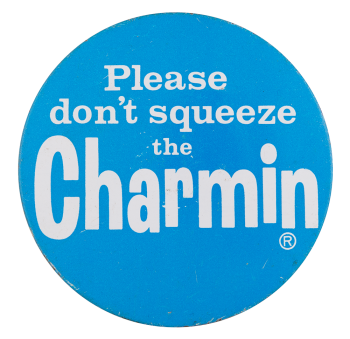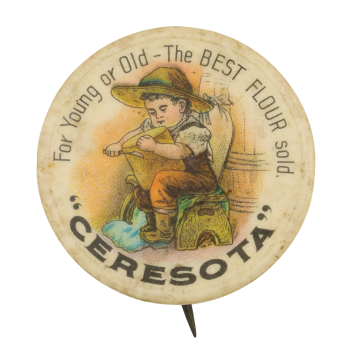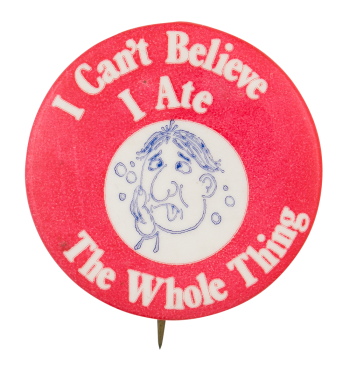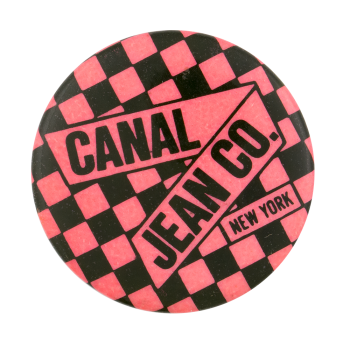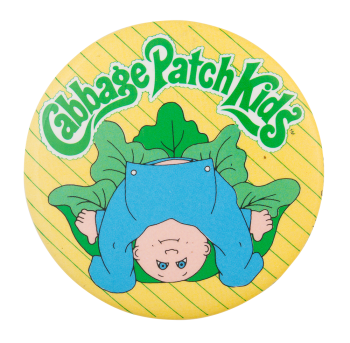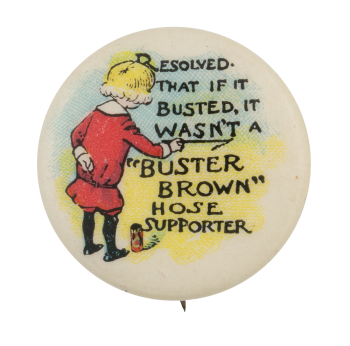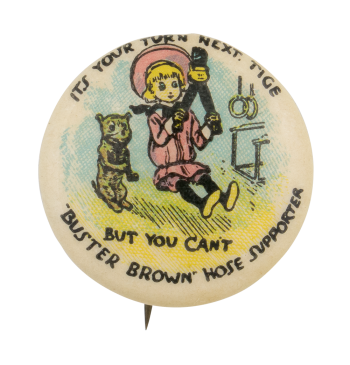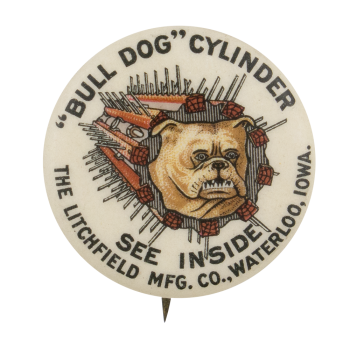Please Don't Squeeze The Charmin
| Category | |
|---|---|
| Additional Images | |
| Sub Categories | |
| Text on Button | Please don't squeeze the Charmin |
| Image Description | White lettering on light blue background |
| Back Style | |
| The Shape | |
| The Size | |
| Year / Decade Made | |
| Additional Information | "Please don't squeeze the Charmin" was an expression said by fictional supermarket manager Mr. George Whipple. The hugely popular, and successful television commercials ran in the US from 1964 to 1985 and showed Mr. Whipple scolding customers who "squeeze the Charmin" while he would secretly squeeze Charmin when he thought no one was watching. The famous tagline was created by John V. Chervokas, a 28-year old advertising writer at Benton & Bowles in 1964, for Proctor & Gamble's toilet paper brand. British-born actor Dick Wilson who played grocer Mr. Whipple in over 500 Charmin commercials said, "I've done thirty-eight pictures and nobody remembers any of them, but they all remember me selling toilet paper." |
| Sources |
Bains, P. (2011, July 27). 'Please Don't Squeeze the Charmin' Creator Dies. Retrieved July 23, 2020, from https://adage.com/article/people-players/squeeze-charmin-creator-dies/2… Charmin. (n.d.). The Charmin Story. Retrieved July 23, 2020, from https://www.charmin.com/en-us/about-us/charmin-history Please Don't Squeeze the Charmin [Advertisement]. (1970). |
| Catalog ID | AD0001 |

